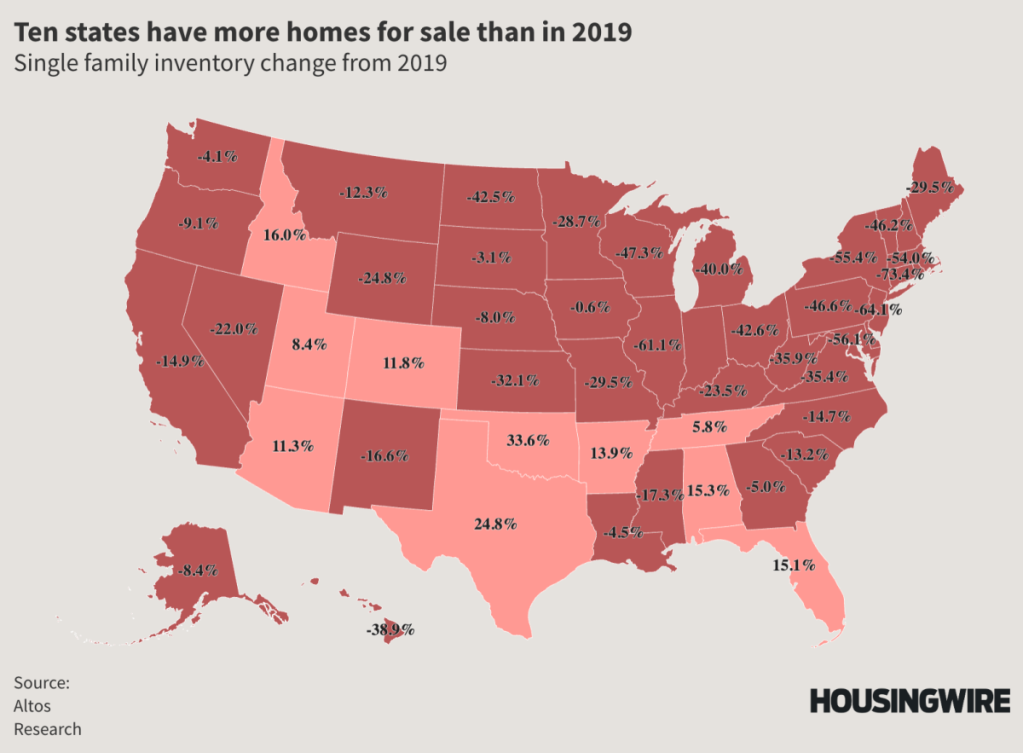The COVID-19 pandemic turned previously sleepy cities into boomtowns. Expanded or permanent work-from-home policies gave people more flexibility in where to live, and those in uber-expensive markets like San Francisco and Manhattan took advantage by moving to areas where they could get more space for less money.
This created incredibly competitive housing markets in smaller cities that pushed sales and prices sky high. But almost five years after the pandemic began, these hot spots are seeing significantly less net inbound migration — and thus less upward pressure on home valuations.
Altos Research data of inventory by state reflects this trend. High mortgage rates have prompted homeowners with rates in the 3% to 4% range to stay put, stifling inventory and home sales across the nation.
Comparing current levels of housing inventory to those of 2019 reveals that listings are down in almost every state. In some states, particularly in the Northeast, the decrease is quite dramatic. Connecticut (-73.4%), New Jersey (-64.1%), Maryland (-56.1%) and Massachusetts (-54%) are struggling with low inventory.
But that’s not the case everywhere. Oklahoma (+33.6), Texas (+24.8%), Florida (+15.1%), Colorado (+11.8%), Idaho (+16%) and Arizona (+11.3%) all have higher inventory levels compared to 2019.
This is curious because Austin, Miami, Denver, Boise and Phoenix were among the markets that exploded in 2021 as people from California and New York moved in, looking to escape strict lockdown restrictions for more open pastures.
While migration to these areas from California and New York continues, it’s significantly less compared to 2021 and 2022. Migration data from the U.S. Census Bureau shows that more than 90,000 people moved from New York to Florida in 2021 and 2022, but this number fell to about 71,00 in 2023.
It’s a similar pattern for migration from California to other western states. The number of Californians migrating to Arizona (-26.8%), Colorado (-21.3%), Idaho (-35.5%) and Utah (-15.1%) dropped precipitously from 2022 to 2023.
While the numbers had already started to cool in 2022, it’s a major turnaround from 2021, when Idaho experienced a 53.4% jump in migration from California, while Florida saw a 59.6% rise in the number of incoming New Yorkers relative to 2019.
HousingWire published a 2025 housing market forecast and will host the Housing Economic Summit on February 26, 2025.





